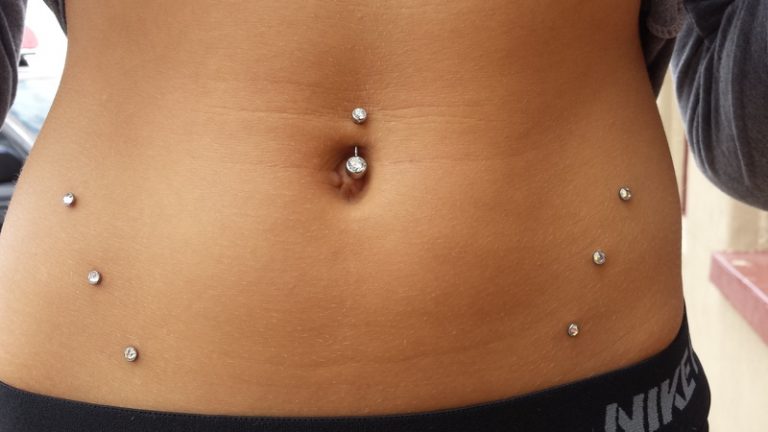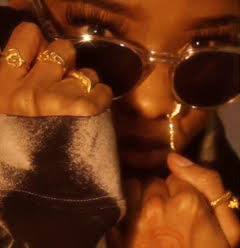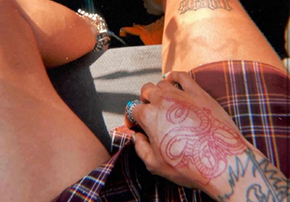Posted by YoniDaPunani on 31st May 2023
A Historical Outlook Of Body Piercings

Countless people have always viewed the human body as a blank canvas to be decorated and altered. This is true across many traditions as well as time periods. Piercings have an extensive spiritual and cultural history. They date back further than the Ancient Egyptians, from the arctic regions to the Islands in the pacific.
Man’s First Endeavor At Piercing
Because of the ease with which it can be pierced, the earlobe was man’s 1st endeavor at piercing. A rock relief from Nimrud, Iraq, depicting a man with a pierced ear, is the earliest recorded evidence of body piercing. This is in the ninth century BC. In addition, the world’s oldest mummified body had an ear-piercing measuring 7-11 mm in diameter. This body was discovered to be more than 5,000 years old.
The Ancient Piercings
Primitive tribes were the first to use ear piercings for magical purposes. The tribes started wearing metallic jewelry in their ears to help stop the entry of bad spirits, believing that metal repels demons and spirits. Seamen got their ears pierced to enhance vision, and if a sailor’s body washed up on a beach, the ear jewelry would compensate for a Christian funeral. In many cultures, ear piercings are part of a puberty ritual in which each parent pierces an ear, indicating the child's reliance on them.
There have been numerous instances of body piercings across history for a variety of reasons. Piercings have been used in many cultures to indicate tribal or clan affiliation, imply prestige and socio-economic ranking, enhance distinctiveness, appear fearsome to enemies, and even figuratively portray a rite of passage.
Royal Naval Piercings and Ear Lobes
There have been reports of naval piercings in ancient Egypt. It is said that the royal family in this culture wore gold rings into their naval to indicate their wealth, power, and status. There aren't many other signs of naval piercing in history, and it appears to be a fairly recent trend. An interesting irony is that only Pharaoh was permitted to have his belly button pierced, and any other individual who did so was executed. However, ear piercing has been practiced throughout history. In the Aleutian Islands, for example, women used to wear sea lion feathers as earrings. This was regarded as a symbol of getting married to a good hunter.
Symbolism and Piercings
Piercings served a purpose for the Ancient Romans, who were very practical. They would get their nipples pierced to demonstrate their strength and muscularity. It symbolized pride that demonstrated their loyalty to the Roman Empire. It represented the Roman army's unity and bond. Julius Caesar got his nipples pierced to demonstrate his strength and to symbolize his unity with his men.
At roughly the same period, Mayans, the Aztecs, and other American Indians began to pierce their tongues as a facet of religious rites. As a form of ritual blood-letting, they presumed it held them nearer to their Gods. These were warrior clans, so septum piercing was practiced to make them appear fiercer to their enemies. Some tribal groups in The Solomon Islands and New Guinea would pierce their tongues similarly. Bone, tusks, and feathers were common materials worn in piercings.
Women with lip labrets were considered more attractive in South and Central America. As progressively larger wooden pieces were inserted to emphasize the lips, holes were frequently stretched to incredible sizes. Mayans and Aztecs also wore lip labrets crafted of Jade and Gold, intricately engraved into mythical or religious figures, which were regarded as particularly attractive and were thought to enhance sexuality.
Girl with the Pearl Earring
Nearly every single male member of the nobility wore one or more earrings during the Hellenistic period and Victorian era eras. During the 1500s through 1800s, Hairdos that revealed the ears were popular, giving rise to ear adornment. The famous painting "The Girl" by Johannes Vermeer, circa 1655, sported a famous drop-earring style of that time. Huge pearl drops and massive diamond studs were excellent ways to flaunt one’s wealth. Then around the 1920s, piercings went out of style.
The Punk Piercings
After an extensive hiatus, piercings began to experience a cultural reemergence. Nose rings became quite prevalent when young hipsters from the United States began traveling extensively to India in search of enlightenment. They began to imitate the traditional nose ring worn by Indians, which was frequently aligned to an earring by a string. Nose piercings, such as the septum, gained fame as a sign of rebellion during the rise of punk in the 1970s and 80s. After reintroducing nose piercings to the United States, attention toward body piercings grew. For centuries, the Beja folks of Africa, the Nomadic tribal groups of the Middle East, and the Australian Aborigines have pierced their noses.
The First Piercing Studio
Many tattoo shops did a few piercings as a sideline, but Jim Ward launched ‘Gauntlet’ in the late 1970s, the very first studio to specialize solely in piercing. He also wrote and published “Piercing fans international quarterly," which was the first piercing interest magazine.
The Golden Age of Modern Piercings
Talking about the 1990s, the craze about piercings began in 1993, when Christy Turlington walked down the ramp with a navel piercing. Naomi Campbell stepped up the trend by wearing a chain belt that connected to her belly button ring. Then, the infamous singer, Brittney Spears, sparked a fashion revolution, and girls in crop halter tops began donning dangly gems everywhere.
Piercings are permeating all aspects of pop culture and becoming increasingly elaborate in the present age. Large online profiles now drive piercing trends. Irrespective of the chronology, it is crucial to remember that body piercing as a form of body refinement is not a new phenomenon. People who get piercings today are taking part in a cultural trend that dates back to the 9th century BC. This is an important fact to remember for people who are dismissive or judgmental of body piercings. Piercings have always been both culturally and personally significant, and this is unlikely to change anytime soon.
Jewelry for Your Piercings
All this conversation about piercings has probably got you thinking about styling yours.
If you want to find jewelry that is trendy and suitable for your piercings according to the new fad, tap the link. https://yonidapunani.com/ In our Homegirlz closet, you will find jewelry that is comfortable, trendy, and cool. Check out all the current obsessions and bestselling pieces and unlock the door to your imagination.





